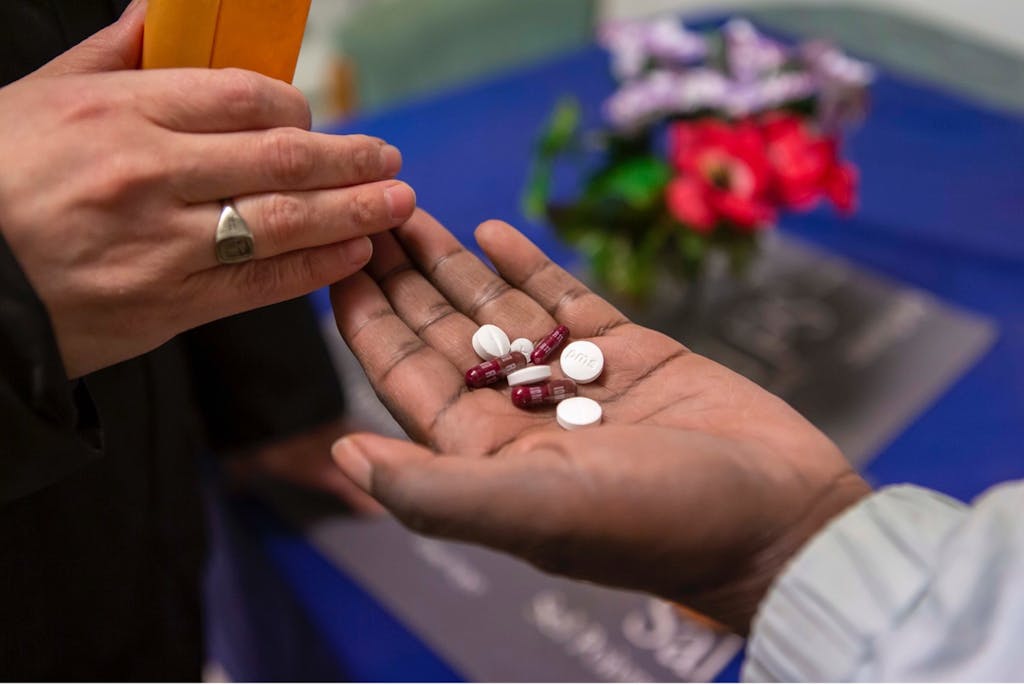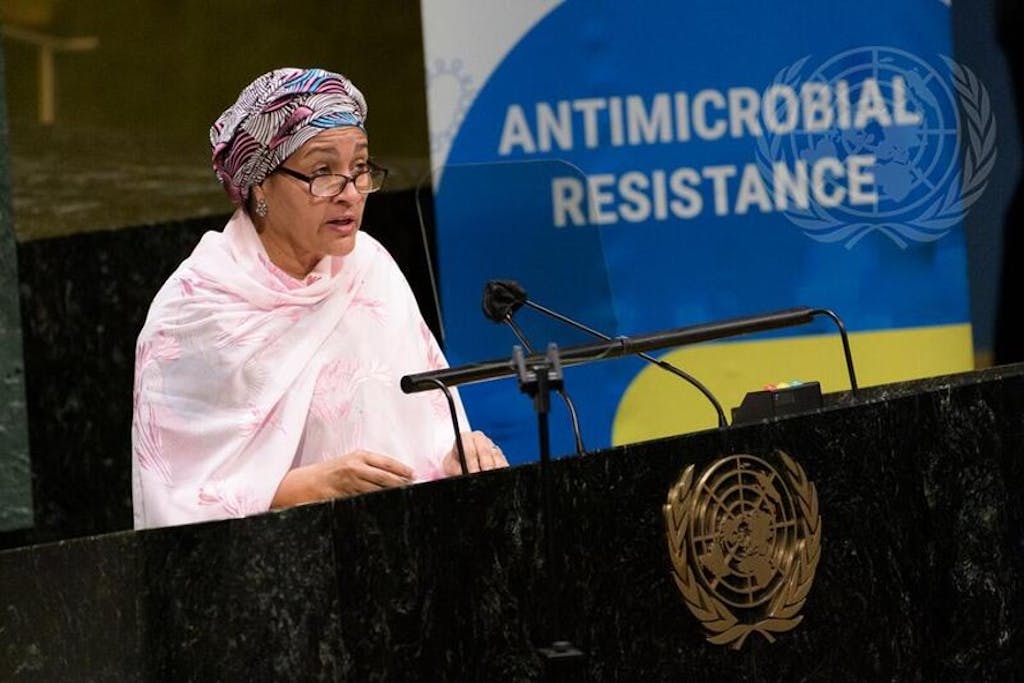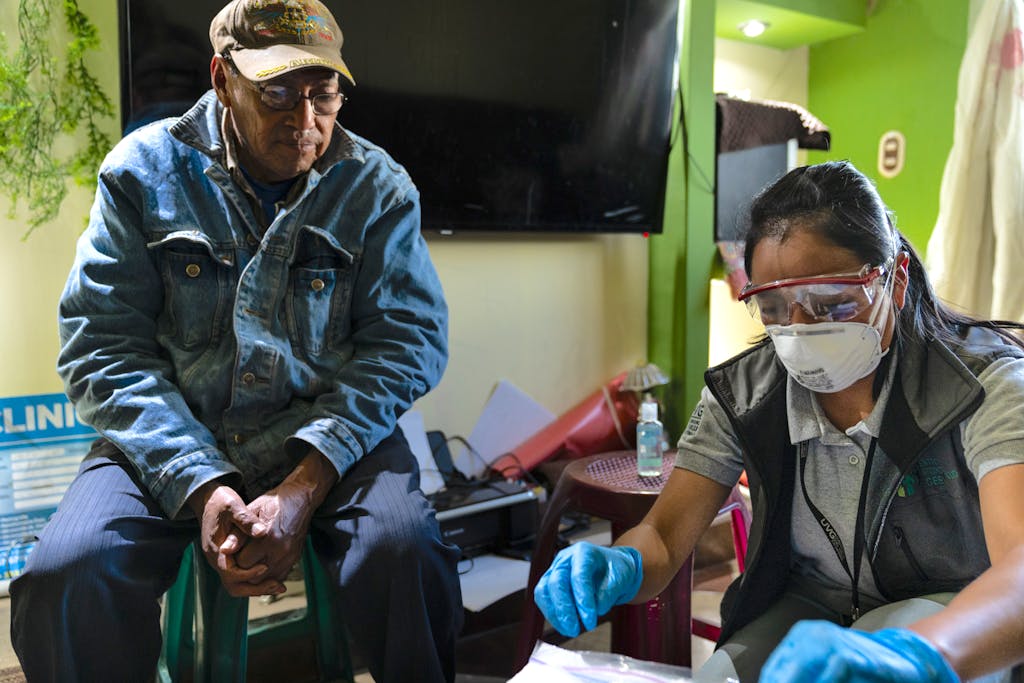Before the COVID-19 pandemic engulfed the world, a silent pandemic had already taken root, prolonging hospital stays, making routine surgeries more hazardous, and causing more than 700,000 deaths per year. If inaction to address antimicrobial resistance continues, it could cause up to 10 million deaths annually by 2050. It’s time to tackle it with urgency.
The toll of antimicrobial resistance
Antimicrobial resistance (AMR) medicines are some of the most powerful tools we have against bacterial and fungal infections, viruses, and parasites. A marvel of modern medicine since penicillin was invented almost a century ago, antimicrobials save millions of lives per year. However, improper use of these medicines can create fertile ground for mutations in diseases, which can build resistance against these vital treatments. During the COVID-19 pandemic, misuse of antimicrobial drugs has surged; 90% of hospitalized COVID-19 patients in the Americas were given antimicrobials, even though only 7% warranted their use to treat secondary infections. If we lose access to everyday antimicrobials, caesarean sections, hip replacements, cancer chemotherapy, organ transplantation, and other regular medical procedures will become riskier and lead to higher rates of mortality because of commonplace infections.
Furthermore, if no action is taken to contain AMR, the economic cost in terms of lost global production between now and 2050 is estimated to reach $100 trillion. There is no question that low- and middle-income countries would continue to be more negatively affected by AMR in coming years, fueling the widening gap of global health and economic inequity. In an analysis done by the World Bank before the pandemic, an additional 28.3 million people would be at risk of falling into extreme poverty in 2050 due to AMR, the vast majority (26.2 million) of whom would live in low-income countries. The role the pandemic has played in increasing global poverty and reducing economic growth in the coming years only complicates the picture further.

A public health nurse delivers tablets every morning to a patient of hers to treat his tuberculosis (TB). The TB has infected his bones and he’ll need to take an 11-month course of medication five days a week. Photo: Christine McNab/ WHO
Antibiotics not only treat human and animal infections; antimicrobial agents are also essential ingredients for food security. Global consumption of antimicrobials in food and animal production is projected to rise by 70% between 2010 and 2030. Doubling agricultural productivity to meet the nutrition demands of the world’s growing population without massively increasing antimicrobial use is a tremendous unsolved challenge that demands our collective attention. Solving an issue as complex as AMR and food insecurity requires greater solidarity and collaboration between the food, animal, and human health sectors—through a One Health approach. One Health is a multisectoral approach that recognizes the innate interconnectedness between people, animals, plants, and their shared environment and emphasizes the need of strong collaboration to address multifaceted, cross-cutting health issues such as AMR.
Not enough global progress
In recent years, the global community has made significant progress. The number of countries that developed national action plans for AMR has increased to 140 and counting; the World Health Organization (WHO), Food and Agricultural Organization of the United Nations (FAO), and the World Organization for Animal Health (OIE) formed a robust Tripartite; and a new Global Leaders Group was created. Yet the world is still woefully under-resourcing the AMR agenda and not responding with political muscle that is commensurate with the level of threat AMR poses in the decades to come.
A Call to Action
This past week the UN Foundation co-hosted the third Call to Action Conference on Antimicrobial Resistance alongside the Governments of Denmark, Colombia, Ghana, Indonesia, Thailand, and Zambia; the International Centre for Antimicrobial Resistance Solutions (ICARS); the Fleming Fund; the United Nations Children’s Fund (UNICEF); the Wellcome Trust; and the World Bank.
The goal of this most recent Call to Action on AMR was to shine a light on country progress, specifically new innovations, approaches, and policies at the community and country levels, as well as to examine lessons from the current pandemic that can inform the global response to current and future health threats such as AMR. Representatives of over 100 countries attended the conference in addition to representatives from civil society, academia, and the private sector.

Deputy Secretary-General Amina Mohammed addresses the General Assembly high-level interactive dialogue on Antimicrobial Resistance (AMR) 04/29/2021.
Photo: Manuel Elías/ UN Photo
Many examples of progress were highlighted:
- In Colombia, officials are taking cross-sectorial approaches to educate health care providers and prescribers to curb the influence of commercial interests on AMR.
- New citizen-generated data from Kenya shows the power of interactive radio shows and SMS/mobile text messaging to increase community understanding of AMR.
- Through collaboration with universities, the tech sector, and international partnerships, Ghana has strengthened the capacity of its laboratories, enabling further research on AMR.
I had the fortune of moderating a discussion on lessons from the COVID-19 pandemic that can be applied to AMR. The pandemic presents obvious challenges to addressing AMR: overtaxed health care systems that have been working on overdrive, heightened food insecurity, and reduced fiscal space in public sector budgets to recover, given the contraction of the global economy over the past 20 months.

A field researcher from Universidad del Valle-Guatemala prepares a sample from a participant in an antimicrobial resistance research project in Quetzaltenango, Guatemala. Photo: Nicholas S. Tenorio/ CDC
But it can also present an opportunity to recover more resiliently by tackling some of the root causes that exacerbated and prolonged the COVID-19 pandemic. These include:
- Addressing inequity within communities and between countries. There is clear inequality in access to essential health services, such as immunizations, diagnostics, and treatments. Closing access gaps to basic health commodities and services will create more resilient and equitable health systems.
- Supporting the most vulnerable communities. Three in 10 people around the world do not have access to sanitation, and 1 in 4 health facilities worldwide lack access to water supplies. Preventing infection in the first place is a cornerstone of a strong response to AMR, which is nearly impossible without adequate water, sanitation, and hygiene services.
- Improving sustainable financing. The world has woefully underinvested in public health surveillance, laboratory capacity, supply chain management, and the global health care workforce. As dialogue accelerates among world leaders on how to increase sustainable financing for prevention and preparedness for health threats — to the tune of at least $10 billion per year — they must account for the ways future investments can mitigate a range of infectious threats, including AMR.
Addressing these crosscutting challenges and deficiencies at the global and local levels would reap great benefits in efforts to accelerate progress on Sustainable Development Goals, strengthen global preparedness for future pandemics, and importantly, reinvigorate the languishing fight against AMR.










